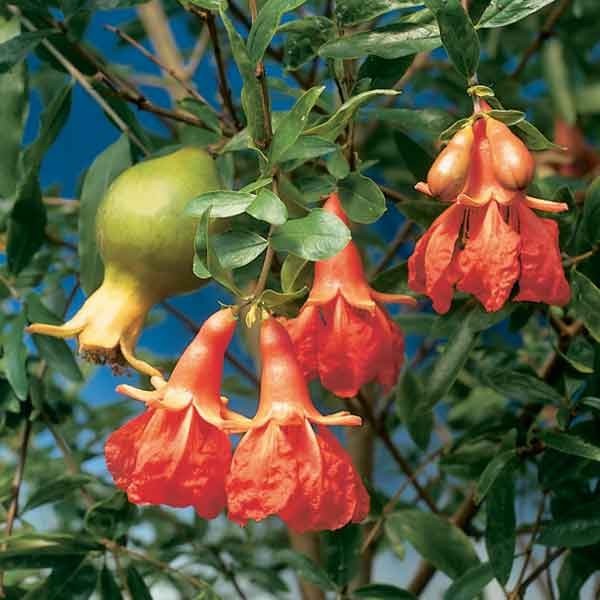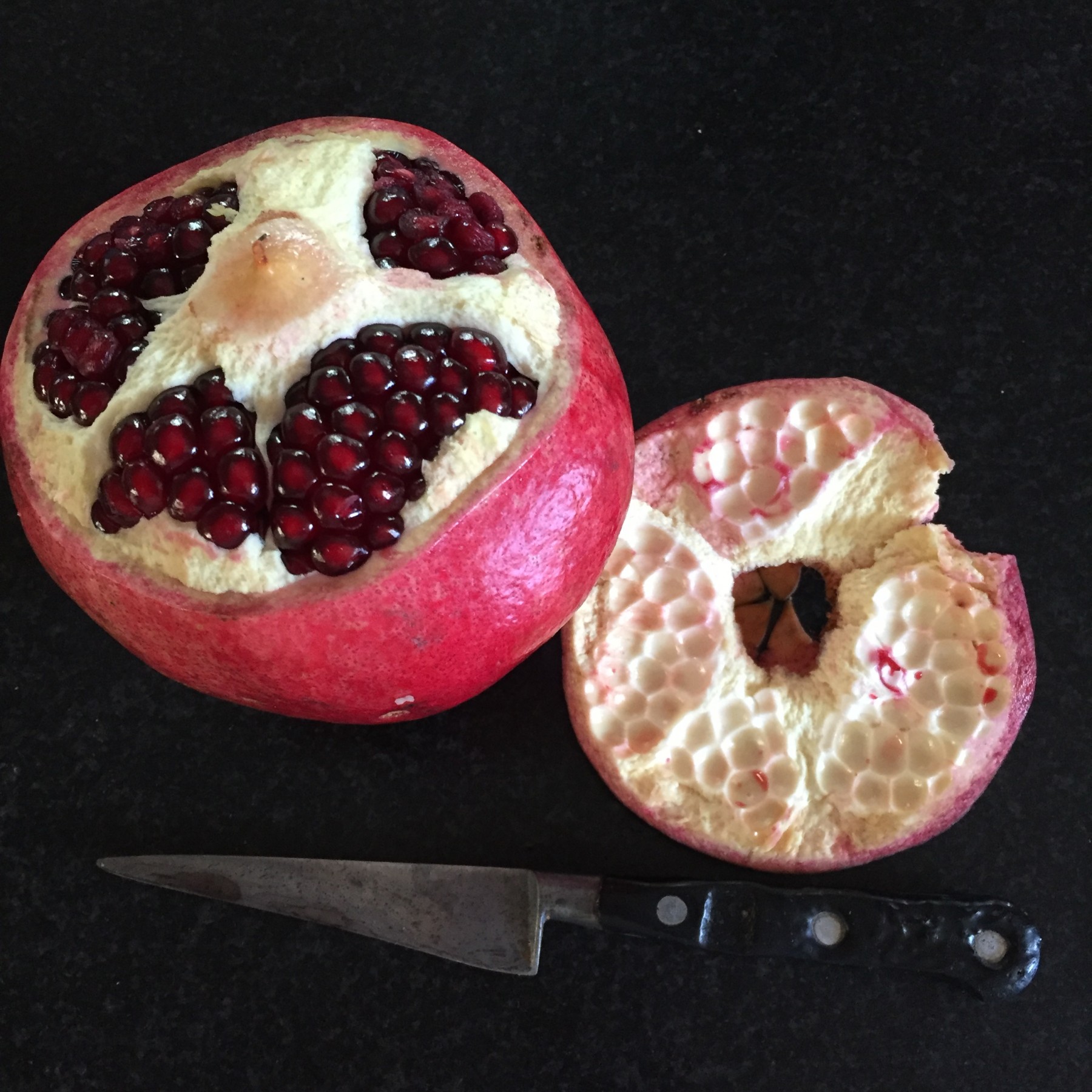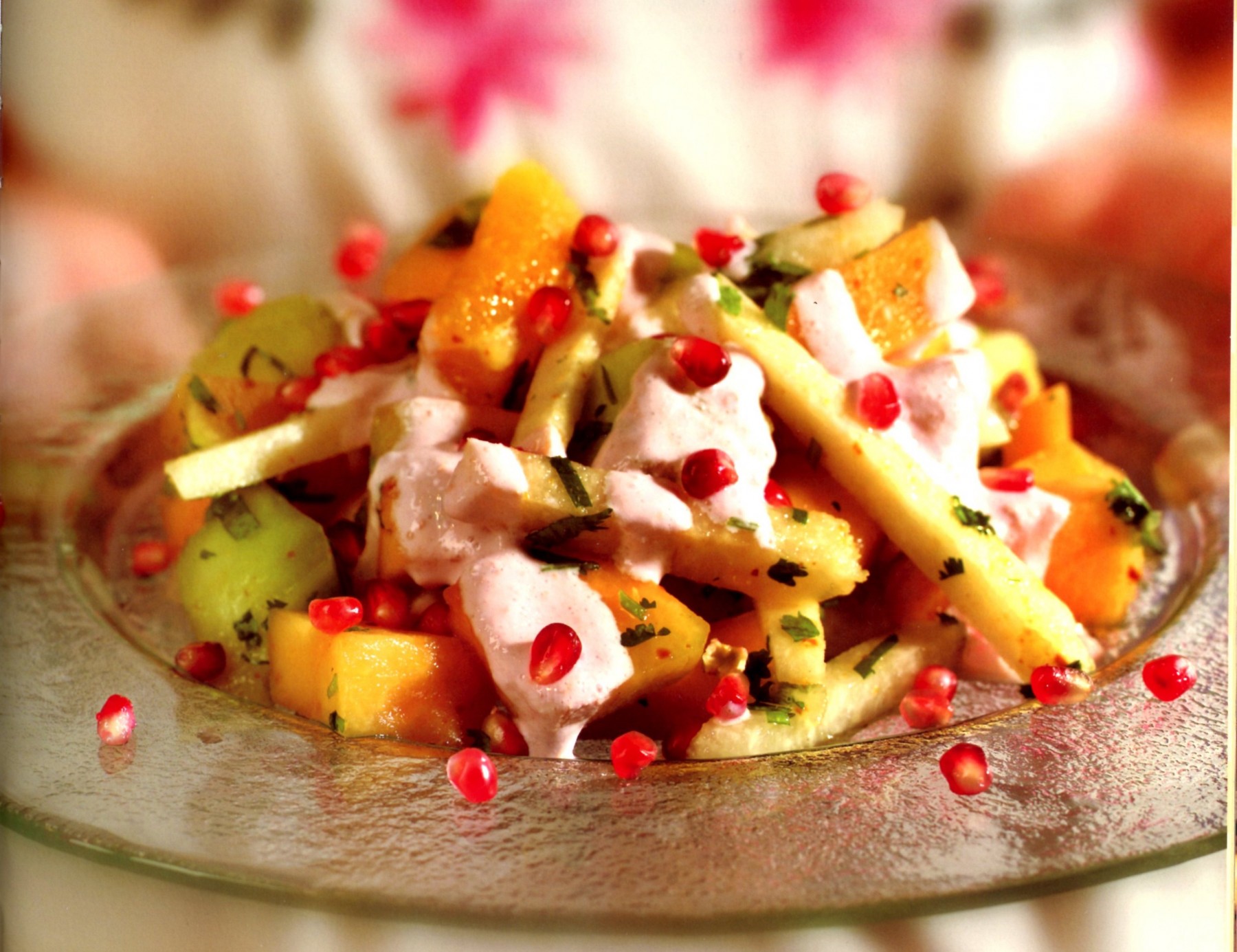
Pomegranate, Punica granatum, is a small tree native to the Mediterranean reaches of the near east, and so in zones where the temperature drops below 40F, is a pretty and productive addition to a conservatory garden. Otherwise it will be happy outdoors in regions with arid hot summers and cool winters. In either situation, pomegranate takes well to container growing (it’s a favorite subject for bonsai) and with its glossy green leaves, crimson orange flowers followed by pendant globes of ruby red fruit, is an eye-catching ornamental indoors or out.
In my Zone 7b, Austin, Texas garden, I grew shrubby pomegranate outdoors in a sheltered spot. The fruit, like the shrub, was small, but the bright color and neat form compensated for its slight stature. There is a actually a variety called the Austin pomegranate but it bears very large fruit, up to one pound in weight on a relatively small tree. At the opposite end of the size spectrum is the dwarf pomegranate ‘Nana’ that grows to only two feet, bears pretty flowers and small but edible fruit – perfect for the patio or sunroom. Whatever sort you grow, they’re low-maintenance, and need neutral, well-drained soil, regular watering and a general fertilizer and are little-troubled by pests and disease.
Pomegranates are legendary in many cultures; in the Jewish faith and with apples and honey are one of the symbolic foods of Rosh Hashanah; ancient Greek mythology attaches them to the story of Peresphone, Queen of the Underworld who permitted to leave Hades to visit earth for six months of the year, had to eat pomegranate seeds to guarantee her return, and thus the fruit became associated with fecundity, harvest, and renewal.

These ancient associations may well be the reason pomegranates are a popular Thanksgiving fruit, if only for decoration, which is often their fate since their reputation as being ‘hard to crack’ to get at the juicy seeds inside, precedes their tastiness. Techniques for this are as numerous as they are tedious, however, the following method is the one I use as the easiest way to get the most from the fruit.
Prepping a Pomegranate
You need a sharp paring knife, a bowl to catch the seeds, a wipeable work surface and a bib-fronted apron as the juice spatters and stains. and the rind, too, has indelible qualities. Gerard, the 16th century herbalist wrote that it was used to make the best sort of writing ink, “which is durable to worlds end.”

Step 1. Carefully slice through the rind around the crown of the fruit; take care not to slice into the seeds. Then prise it off with your fingertips.

Step 2. The white pith is exposed, like the segments of a grapefruit, and the seeds are attached to it in rows. Notice, too, that the fruit has a rather angular shape that corresponds to the pith. Use the knife to slice down the rind along these sections.

Step 3. Gently pull the sections apart and peel away the exposed white membrane before rolling the seeds away from their pithy mooring; use the flat of your thumb to do this, working gently so as not to squash the juicy seeds. Stop now and then pick out any pith or membrane that falls into the bowl; it is highly tannic and bitter.
Adapting a recipe from the Austin restaurant Fonda San Miguel’s excellent cookbook (below), I serve this zingy fruit salad to brighten the table and our tastebuds at Thanksgiving dinner — a welcome game changer from green bean casserole.

For 4 people, peel and cut 2 navel oranges into bite size pieces. Similarly prepare 2 cups of honeydew melon, or watermelon. Slice a small jicama – or for more flavor, a celeriac root – into matchsticks. Toss in a bowl with half a cup of pomegranate seeds and a couple of tablespoons of chopped coriander leaves. Extract the juice from a half cup of pomegranate seeds by squeezing through a sieve, then add the juice of half a lime. Mix into the fruit. Sprinkle with salt and black pepper and set aside for one hour minimum to let the flavors meld. Dust with a pinch or two of chili powder before serving. A dribble of crema (sour cream) is optional.
Feliz dia de Thanksgiving!
©Ethne Clarke 2017, text and photographs unless otherwise indicated.


